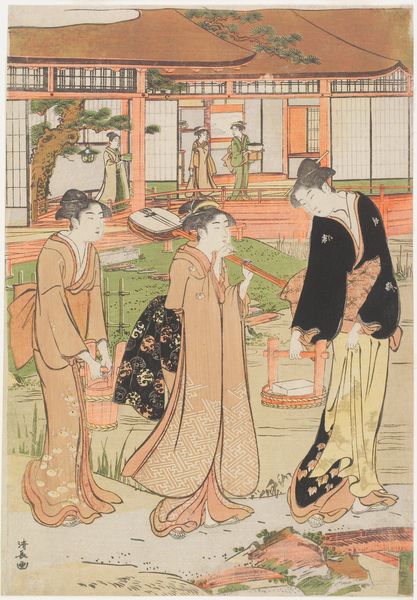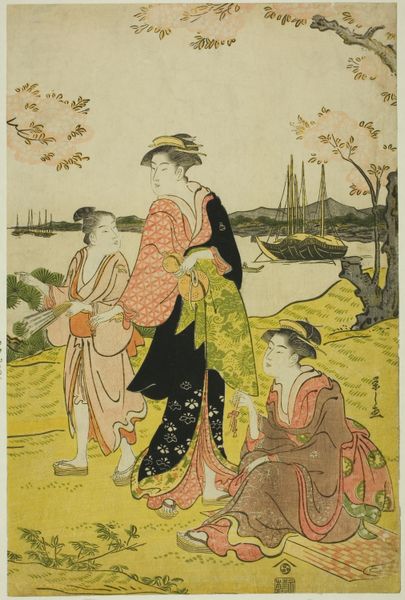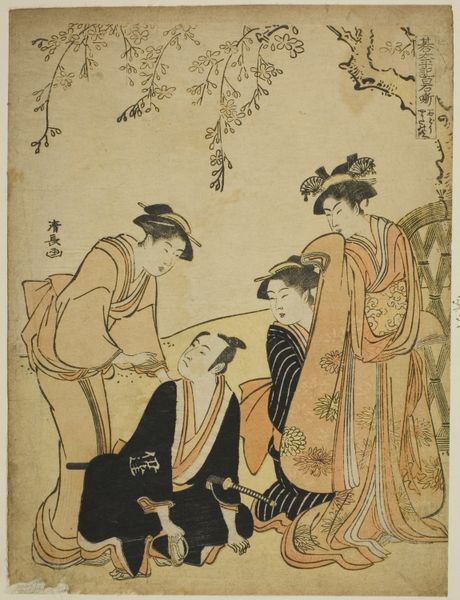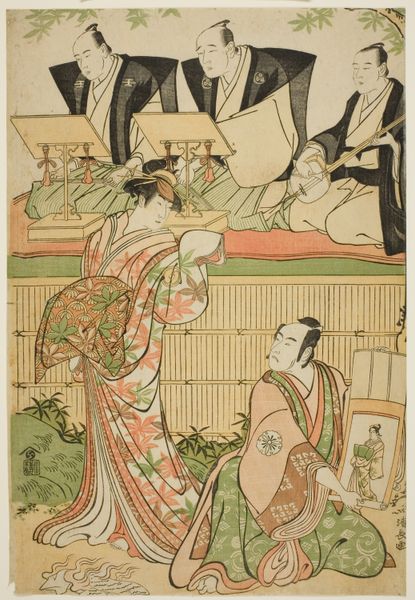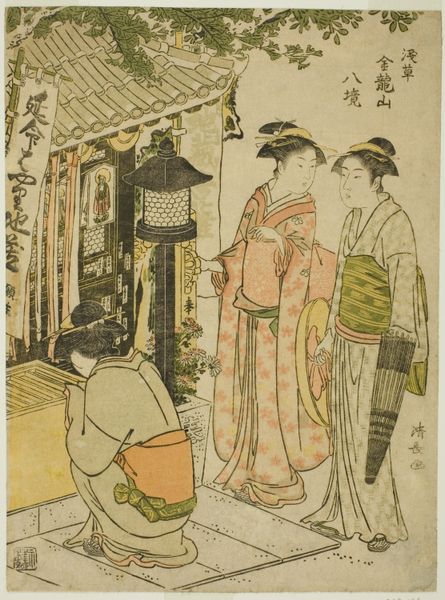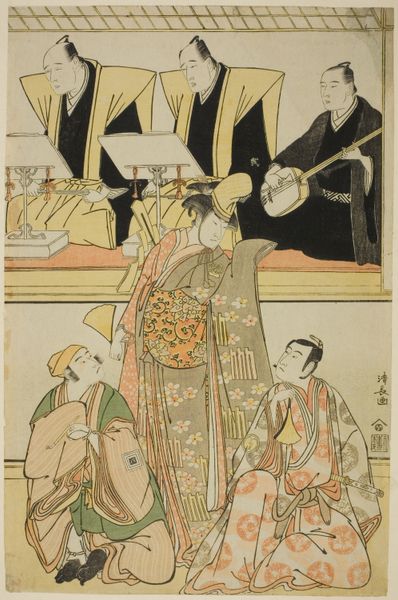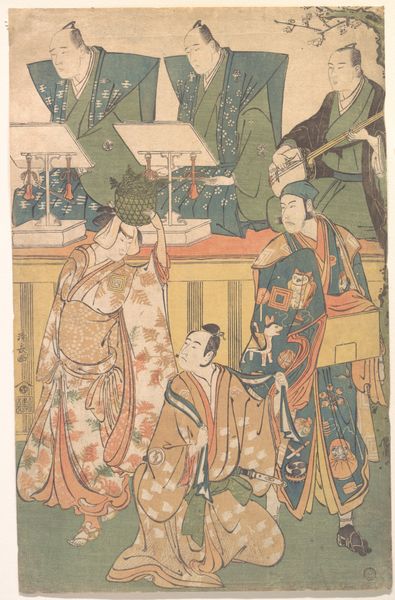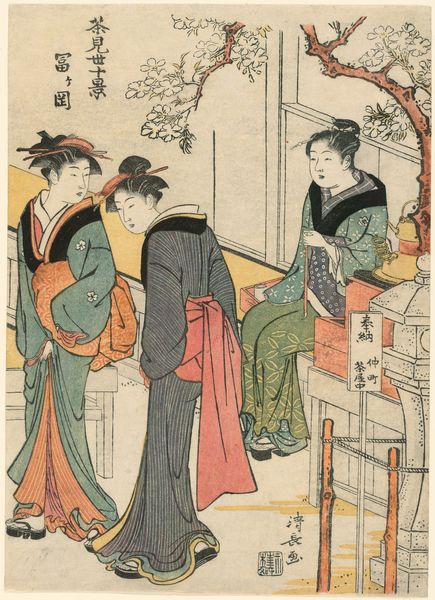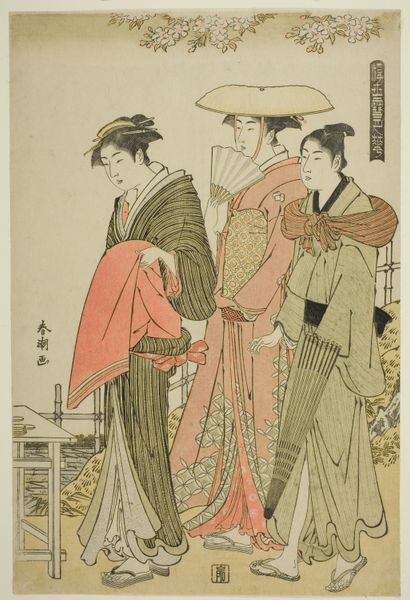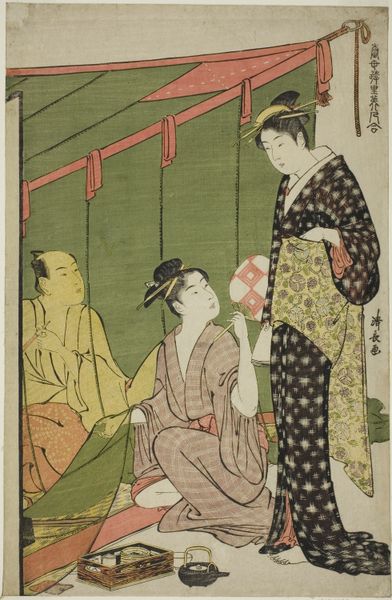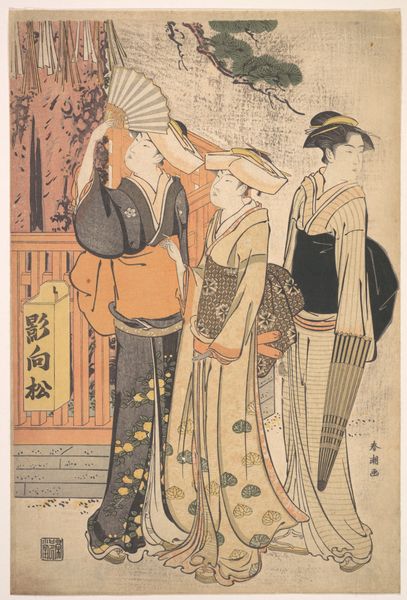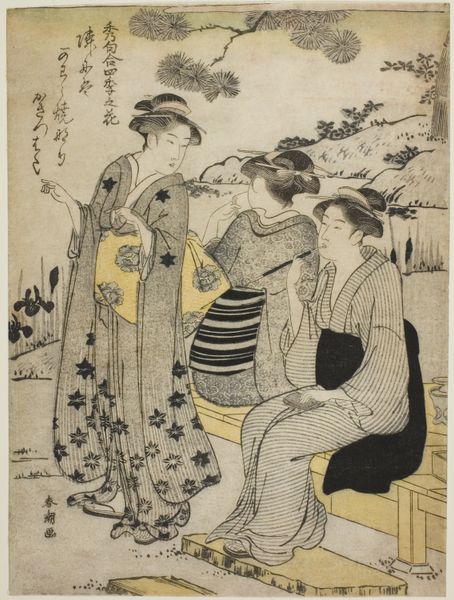
print, woodblock-print
#
portrait
#
water colours
#
ink painting
# print
#
asian-art
#
ukiyo-e
#
japan
#
woodblock-print
#
cityscape
#
watercolor
Dimensions: 38.3 × 25.4 cm
Copyright: Public Domain
Editor: This woodblock print, "Women Crossing Nihonbashi Bridge," was created around 1786 by Torii Kiyonaga and it's now held at The Art Institute of Chicago. I’m really struck by the muted colors, and how that palette evokes such a calm atmosphere, even though it depicts a bustling city scene. How would you interpret the significance of a scene like this, from a historical perspective? Curator: It's fascinating how Kiyonaga captures the subtleties of urban life in Edo-period Japan. Consider Nihonbashi – not just a bridge, but a symbolic center of commerce and social exchange, quite literally a national measuring point. Kiyonaga’s focus on fashionable women suggests a shifting societal gaze toward the urban merchant class and its emerging cultural power. What do you think the artist is communicating by showcasing these women, rather than, say, samurai or figures of traditional authority? Editor: Well, depicting women who are presumably wealthy merchants in fashionable clothes reflects the rising economic status of the merchant class relative to other groups. This might point to how power structures in Japanese society were beginning to change during that time. But are we losing anything in the picture by not seeing any authority figures, as a modern observer? Curator: That's an insightful question. Perhaps Kiyonaga is deliberately sidestepping established power dynamics, implicitly commenting on their declining relevance in the face of growing commercial influence. The floating world of Ukiyo-e celebrated the ephemeral pleasures and social realities of the urban populace. This depiction emphasizes their world. Editor: So it’s more than just a pretty picture; it’s a document of social change and how class influenced visibility in art! It really underlines how important it is to look at art as embedded in larger cultural shifts. Curator: Precisely. Seeing art as intrinsically linked to socio-political transformations gives us a richer understanding, not only of the artwork itself but also of the era it reflects. A fascinating print!
Comments
No comments
Be the first to comment and join the conversation on the ultimate creative platform.
